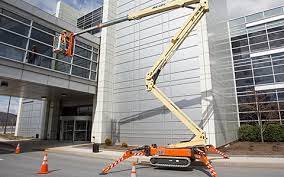
A Complete Guide to Aerial Lift Rental: Types, Costs, and Safety Tips
If you’re in need of reaching heights for maintenance, construction, or other tasks, renting an aerial lift can be a cost-effective and efficient solution. This guide will walk you through everything you need to know about aerial lift rental, including types of lifts, costs involved, and important safety tips.
Types of Aerial Lifts
There are several types of aerial lifts available for rent, each designed for specific tasks and environments. Some common types include:
- Boom Lifts: Also known as cherry pickers, these lifts have a hydraulic arm that extends vertically and horizontally, allowing access to high and difficult-to-reach areas.
- Scissor Lifts: These lifts have a platform that can only move vertically, making them ideal for tasks that require a stable, elevated work platform.
- Aerial Work Platforms (AWPs): These lifts are versatile and can be used for various tasks. They often have a platform surrounded by railings for safety.
- Articulating Boom Lifts: These lifts have multiple sections that articulate, allowing them to reach over obstacles and into tight spaces.
- Telescopic Boom Lifts: These lifts have a straight, extendable arm that provides high reach and great horizontal outreach.
Costs of Aerial Lift Rental
The cost of renting an aerial lift can vary depending on several factors, including the type of lift, duration of rental, and location. On average, you can expect to pay between $150 to $500 per day for a standard boom or scissor lift rental. However, prices can be higher for specialized lifts or longer rental periods.
Safety Tips for Aerial Lift Rental
- Training: Before operating an aerial lift, ensure that all operators are properly trained and certified to use the equipment.
- Inspection: Before each use, inspect the lift for any damage or defects that could affect its safe operation.
- Fall Protection: Use a harness and lanyard when working from an aerial lift to prevent falls.
- Load Capacity: Do not exceed the maximum load capacity of the lift, and distribute the load evenly on the platform.
- Weather Conditions: Avoid using aerial lifts in high winds or other adverse weather conditions.
- Positioning: Position the lift on stable and level ground, and use outriggers or stabilizers if necessary.
- Communication: Maintain clear communication with ground personnel while operating the lift.
Flood Control Barrier System
In addition to aerial lifts, another important aspect of safety and protection is the use of flood control barrier system. These systems are designed to prevent flooding in low-lying areas and can be crucial for protecting property and infrastructure during heavy rainfall or storms.
Conclusion
Renting an aerial lift can greatly increase your efficiency and safety when working at heights. By understanding the types of lifts available, the costs involved, and the safety precautions to take, you can ensure a successful rental experience. Remember to always prioritize safety and follow the manufacturer’s guidelines for operating the lift.



